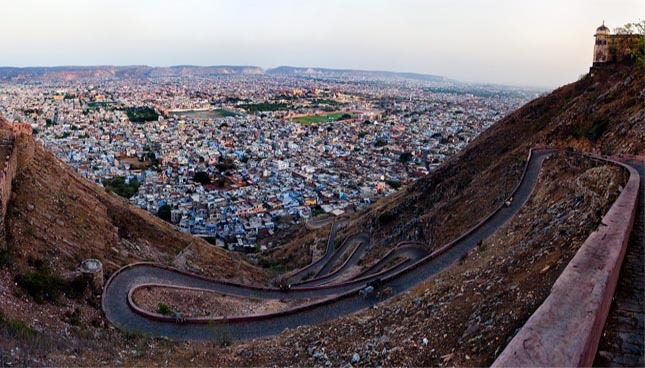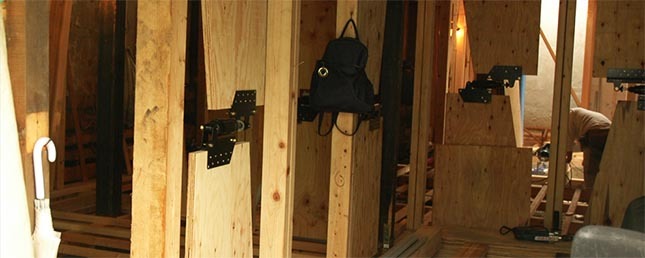The Path May Be Meandering but It Is Your Own

Who ever heard that their curriculum had an implacable logical sequence? Hardly anyone has. I would bet that most feel their journey is too twisted, too weird, and a little inconsistent. Having doubts is something normal, though when transforming them, you become an individual of great value: yourself. You may anticipate what comes next: beating around the bush, big words and rhetoric? You will be disappointed; this is not the case. While giving you a brief account of my experience, I will attempt to demonstrate that all you have to do is unearth your own underlying worth, dormant within. A personal aside follows.
A few years back, I was a graduate-level student at the École de technologie supérieure (ÉTS), most likely just like you now reading this article. To be more precise, I was pursuing a Master of Engineering in the Department of Construction, with a concentration in design and rehabilitation, and graduating at the end of the 2012 Fall session. So about 15 months after I had started this master’s program, I closed that chapter of my life at ÉTS. It had begun after two years of study at Arts et Métiers ParisTech, when I was fortunate to be selected to pursue a double diploma in construction engineering at ÉTS, an option not offered at my original school. Therefore, the complementary training looked rather attractive.

Before I finished my internship at an engineering consulting firm and before departing for Canada, my mentor whispered a word in my ear: “earthquakes”. I confess that I had trouble understanding what he meant at the time. But the idea gained ground and I had the opportunity to take the “Design of Earthquake-resistant Structures” course at École Polytechnique of Montreal. A few months later, I seized another opportunity with a course titled “Design of Wood Structures”, this time at McGill University. These two off-campus courses gave me a lot. I was offered the chance to take opportunities that I knew were beneficial. Why deprive myself? And why deprive yourself?
At the risk of repeating myself, courses are not everything. To remain on the academic topic for a few more sentences, allow me to mention the project or thesis. Once again, since ÉTS empowers students with flexibility, why not take advantage of it? I chose a 15-credit project which, for me, represents a balance between a large number of courses to rebalance my curriculum and fairly substantial research work. This is an opportunity to enhance your curriculum, and, to be original, I chose… earthquakes! An interdisciplinary project between earthquake engineering and the weaknesses of existing buildings, two domains that have, I think, a promising future.
Apart from a very enriching experience at a consultancy firm (more like a kind of construction engineering-consulting business) as an engineer trainee in engineering structures, issues relating to conventional building materials, mainly with concrete and wood—I already had learned extensively about metals during my training in France—were only briefly touched upon. Never mind! Everything cannot be learned in one course, far from it. It is easy to say, but what is it actually about? It is up to you to tackle reality head on, but luckily, you are not alone. You can find many helpful resources at ÉTS to align yourself with “market requirements”, to pave your way, to complete your skill set and to carry on enriching yourself personally and professionally.
However, not all courses can be given at ÉTS. Montreal does not have such excellent universities simply for the sake of its inhabitants’ pleasure and pride. As you read earlier, I initially hoped to orient myself more towards “design” than “management” at first. I had hoped for a career choice, a gamble, just a challenge. Unfortunately for me, most design courses were offered at the undergraduate level, and as such, were outside the Master’s Program. I had to find an alternative. Why not gain knowledge from where it is available? Why would I mind?
Unluckily, while in my final year, it was not the best of times for civil engineering in Quebec. I had to make the difficult decision to plan my return to France. After refusing several job offers as underpaid or not matching my interests, I headed back to school for a few very short months. This time, I enrolled for a Specialized Master in European Civil Engineering at the École des Ponts ParisTech This training is recognized for its excellence, and as a result of my professional thesis, I was hired at Freyssinet International & Cie within the Cable Structures Team.
After nearly two years with this team, I had the opportunity to work on bridges and stadiums among the most important in construction, to travel to a lot of countries and to cooperate with many customers bringing them complete satisfaction while ensuring the safety of our teams. All this while still refining my expertise in structural dynamics, a major issue with cables in ever-longer or challenging projects.
At the stage I am at now, I can confirm one thing: your atypical path will make you stand out and make you a sought after individual. Possessing such a special mix of knowledge and skills, is a unique combination, so very valuable. The logical sequence of your journey may not be obvious, but even a brief review of what led you to this point should help. From now on, after repeating this review from time to time, this logical sequence will become clearer to you. Each time you will perform this review, the worth that is “dormant” inside you will reveal itself. Simply said: “Lather, rinse, repeat.” Remain confident, you made the right choice.



